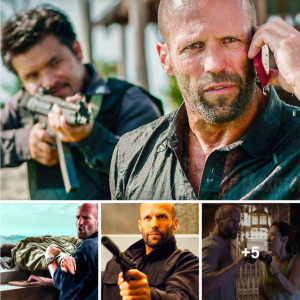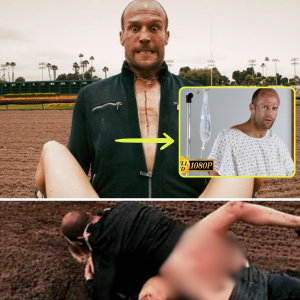Jason Statham, the renowned action star known for his tough-guy roles and impeccable martial arts skills, found himself in a real-life situation that seemed straight out of one of his blockbuster movies. While traveling through a remote part of Eastern Europe, he inadvertently stumbled upon a dire and dangerous situation: a beautiful woman being forcibly taken away by a group of human traffickers. His instincts and training kicked in, propelling him into action without a moment’s hesitation.
Statham’s intervention was swift and decisive. Using his skills honed from years of martial arts and stunt work, he neutralized the traffickers with precision and efficiency. The woman, terrified and in shock, was freed from her captors. Statham ensured she was safe before calling the local authorities to handle the aftermath. This heroic act not only saved the woman’s life but also potentially dismantled a small part of a much larger, insidious human trafficking network.
The woman, whose name was Elena, was a university student who had been abducted on her way home. Her gratitude towards Statham was immeasurable, but she never imagined how she would repay him. The incident quickly garnered media attention, with headlines praising Statham’s bravery and shedding light on the pervasive issue of human trafficking. Elena, though grateful, felt a deep sense of debt and wanted to express her gratitude in a meaningful way.
Elena’s return of gratitude came in a form that surprised everyone, including Statham. She was a talented artist, and through her harrowing experience, she decided to use her skills to raise awareness about human trafficking. She created a series of powerful paintings depicting the horrors and the resilience of survivors. These artworks were not just a personal expression but also a call to action for society to address and combat human trafficking.
With Statham’s support, Elena organized an art exhibition to showcase her work. The exhibition, titled “Freedom’s Cry,” opened in London, with all proceeds going to organizations dedicated to fighting human trafficking and supporting survivors. Statham used his influence and connections to bring attention to the event, ensuring it received widespread media coverage. The exhibition was a resounding success, drawing in large crowds and raising substantial funds.
What truly surprised everyone was not just the art itself, but the impact of the exhibition. Elena’s paintings, raw and evocative, moved many to tears and spurred a significant increase in donations and volunteer work for anti-trafficking organizations. The awareness generated from the exhibition led to new policies and increased efforts by law enforcement agencies to combat human trafficking.
For Statham, the experience was profoundly humbling. He had saved a life, but in doing so, he had inspired a movement. Elena’s return of gratitude was not just a personal thank you; it was a powerful and enduring contribution to a cause that affected countless lives. Her bravery in transforming her trauma into a force for good left a lasting impression on all who encountered her story.
Through this unexpected journey, Jason Statham realized that heroism goes beyond the physical acts of saving someone; it lies in the ripple effects of inspiring change and hope in a world that desperately needs it. Elena’s gratitude, expressed through her art and activism, underscored the profound impact one person can have on the world, turning a moment of rescue into a lifelong mission of advocacy and support. This story, blending real-life heroism with the arts, showcased the power of gratitude and the enduring fight against human trafficking.





